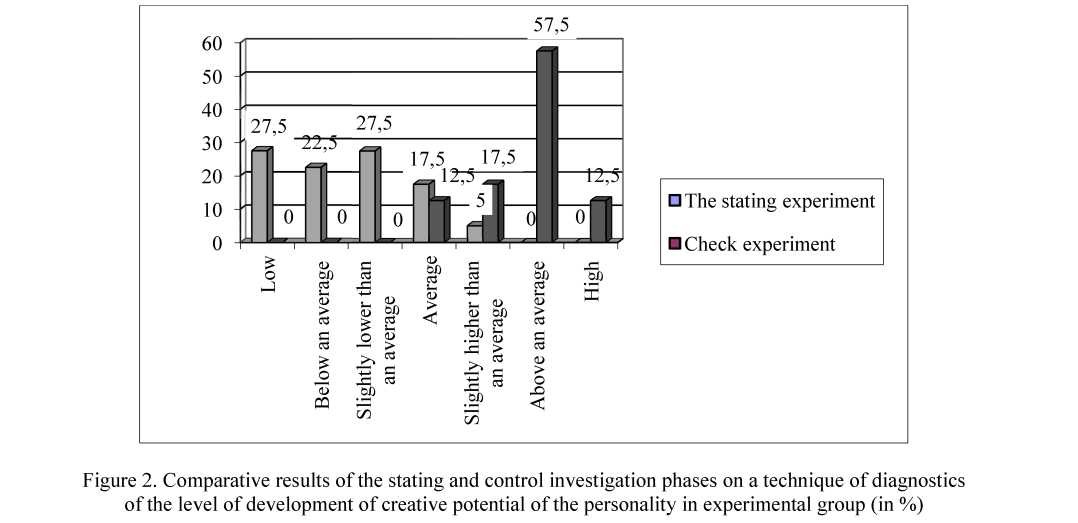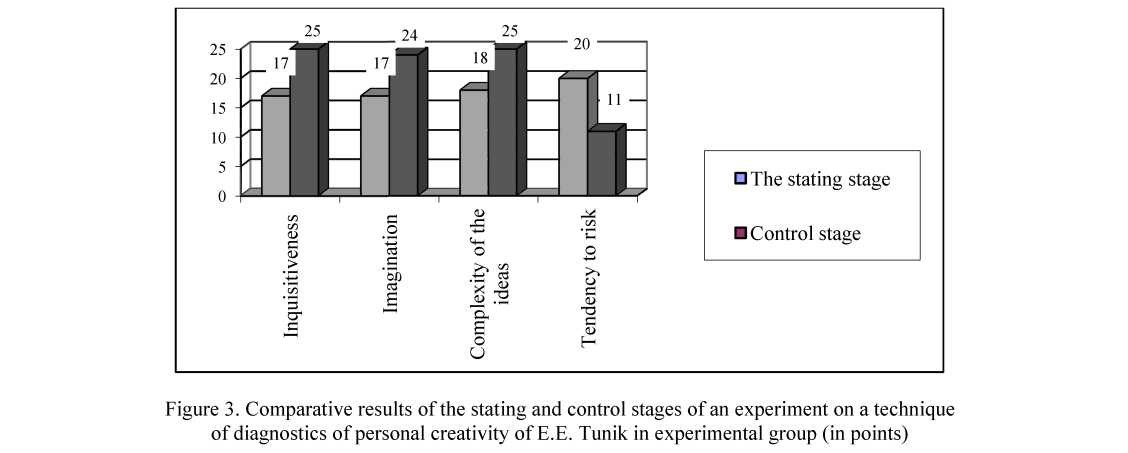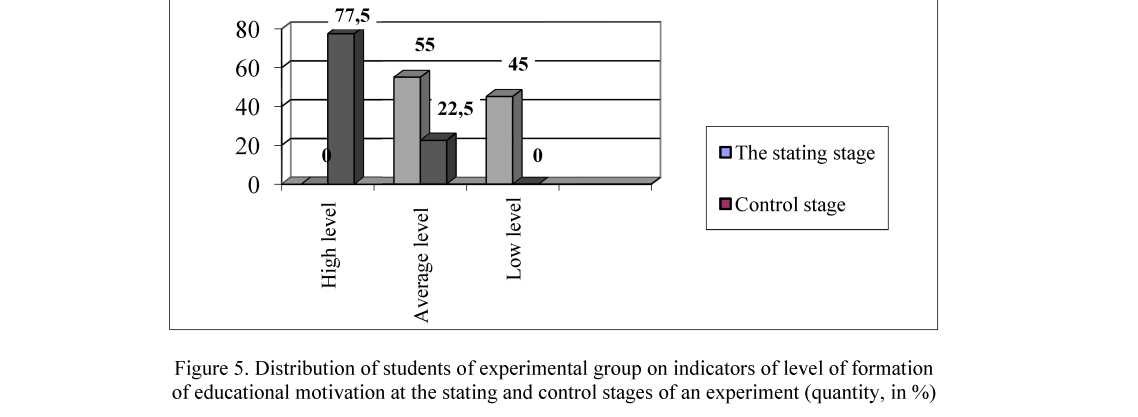In the article topical issues of interactive methods of training in higher education institution are considered. Interactive training assumes a peculiar organization of educational audience. Change of habitual educational space «face to face» allows to solve educational problems together, increase readiness for the solution of an unusual educational situation. In the interactive system of training approach to the system of estimation changes. Currently, the scientific pedagogical community is actively discussing the problems of higher education: the development of motivational readiness for professional activity; the quality of professional training of students; methods of teaching at the University; changing the requirements for graduates by employers; employment of graduates, etc. The quality of professional training of future specialists directly depends on the level and degree of formation of motivation to study with students. As one of the ways to solve this issue the introduction of new teaching methods in the educational process of the University should be considered. The authors revealed and compared various approaches to the analysis of motivational bases of students; identified and described features of the use of interactive learning technology at the University; designed and implemented development model of learning motivation of students through interactive teaching linguistic disciplines at the University.
Among problematic issues formation of motivational bases in the course of vocational training on technical specialties is especially relevant for students of 1 course. The quality of vocational training of future experts directly depends on level and degree of formation of motivation to training of students. As one of solutions of the matter it is necessary to consider introduction of new methods of teaching in educational process of higher education institution.
In the Message of the President of the Republic of Kazakhstan — the Leader of the nation
N.A. Nazarbayev to the people of Kazakhstan «The Kazakhstan way — 2050: The uniform purpose, uniform interests, the uniform future» in education is specified as a priority that a lot of work on improvement of quality of all links of national education is necessary. Mastering skills of critical thinking, independent search and the deep analysis of information has to become result of training [1].
The main priorities of development of the higher education are defined in the State program of development of education of the Republic of Kazakhstan for 2011–2020 where the task is set — to prepare highly educated, competent people who will be able independently to make important decisions, with sense of responsibility for the fate of the country [2].
The students as social group are characterized by social orientation, formation of the relation to future profession which are a consequence of correctness of the professional choice and adequacy and completeness of idea of the student of a profession.
At students of the first courses the relation to future profession has still no expressed character, but with acquisition of professional knowledge students comprehend subtleties of the future specialty and the «I» in a profession more deeply. Formation of steady positive motives of educational professional activity, socially important and professionally significant qualities of the personality, readiness for professional growth, finding of optimum receptions and ways of high-quality and creative performance of educational professional activity according to individual and psychological features of the identity of the student provide success of future professional activity.
The modern domestic higher education system at a new stage of reconsideration. Transition of society to essentially new culture center of which «is more and more displaced on identity and individual consciousness (I think differently, but you think so, and I want to understand it)» updates educational technologies of interactive type [3; 84].
In the course of search of the pedagogical technologies meeting the requirements of modern times appeared the term interactive training.
Interactive training assumes a peculiar organization of educational audience. Change of habitual educational space «face to face» allows to solve educational problems together, increase readiness for the solutionof an unusual educational situation. In the interactive system of training approach to the system of estimation changes. The attention of the teacher goes for understanding of how this answer is received. The teacher uses mistakes of students for the analysis of logic of their thinking, improvement of tasks.
Interactive training demands use of special forms of the organization of cognitive activity and creation of comfortable conditions of training and inclusiveness of all students in educational interaction sets quite concrete and predicted purposes, for example, that does productive process of training.
In comparison with traditional training in interactive training interaction of the teacher and students changes: the activity of the teacher gives way to activity of students, and creation of conditions for an initiative becomes a task of the teacher.
Considering need of development of motivation of the doctrine in students and use at the same time of technology of interactive training, the purpose is studying and use of a complex of interactive methods of training for development of motivation of the doctrine of students of 1 course of technical specialties.
Application of interactive methods of training in development of the language disciplines having in a basis dialogical, «a subject-subject», a fasilitation form of communication and focused on motivation, judgment and a reflection of all training material, promotes formation and increase in educational motivation, development of creative potential of the personality, increase in creativity and motivation to success at students of 1 course of technical specialties.
For check of a hypothesis, achievement of a goal and the solution of tasks the psychology and pedagogical experiment was made.
For purity of an experiment students of 1 course of technical specialties were divided into 2 groups:
- students of agronomical specialties entered into control group;
- the experimental group was made by students of polytechnical specialties.
Skilled and experimental work was carried out in 5 steps:
At 1 investigation phase the analysis and selection of diagnostic techniques were carried out.
2 stage consisted in carrying out the stating experiment stage on the basis of the selected diagnostic tools, the analysis of primary results of diagnostics of level of educational motivation of students of 1 course.
On the 3rd forming stage of an experiment there was a task to develop and give classes in discipline «Russian» with use of interactive methods of training.
4 stage assumed carrying out a control cut (a control stage of an experiment) of the level of educational motivation of students of 1 course of technical specialties with the subsequent analysis of results;
At the 5th final stage the comparative analysis of results of experimental group was carried out and recommendations for teachers of higher education institution about application of interactive methods of training are developed.
For carrying out the stating stage 4 psycho-diagnostic techniques of a research of features of motivation of students were selected:
- Technique of diagnostics of educational motivation of students A.A. Rean and V.A. Yakunin, N.Ts. Badmayeva's modification;
- Technique of diagnostics of the level of development of creative potential of the personality;
- Technique of diagnostics of personal creativity of E.E. Tunik;
- Motivation to Success test of T. Elesa [4; 151].
For creation of the atmosphere of interactive communication on classes the following communicative receptions were used:
- Methods of prevention and removal of the blocking communicative affects (communicative block, awkwardness, depression, constraint, uncertainty in communication):
- creation on classes of the atmosphere of security at communication of students with teachers;
- approval, support by means of giving of value to the attempt of the answer, to the fact of participation in dialogue;
- approval of practice of the address of students for the help to the teacher or companions;
- encouragement of oral answers on own initiative students;
- creation of the sparing conditions at the answer of the student with pronounced communicative block;
- prevention of actions from the certain students suppressing creative activity of companions on classes.
- Methods of rendering communicative support in communication process:
- - rendering the timely help in selection of adequate lexicon, in the correct creation of statements;
- - explanation of sense of communicative norms in a concrete situation of communication;
- - training (direct or indirect) to communicative receptions, technique of a performance and communication;
- - expressly positive criticism (if such is necessary) behavior of the student in dialogue with the teacher;
- - demonstration by verbal and nonverbal means of the interested attention to students, support of their aspiration to participation in dialogue with the teacher;
- - expeditious granting an opportunity to students «to justify impatience of the raised hand»;
- - granting to students an opportunity to orient in a situation, «to collect the thoughts».
- Methods of initiation of counter educational and informative activity of students:
- - direct motivation of students to active interaction with the teacher on classes;
- - motivation before group of encouragement of students for the shown initiative;
- - criticism of own mistakes as demonstration of a standard of the attitude towards them;
- - «game provocation» («Askar mistrustfully smiles at your answer. Prove to it that you are really right...»).
In the course of the class such methods and strategy as «A mosaic of problems», Fishbon, «Press conference», «Drawing up a cluster», «The table of «thick» and «thin» questions», «A camomile of questions of Blum», «Marks on fields» or «Reading with a dung», «Writing of a cinquain», «Writing of an essay», «Table synthesis» or «The diary of threefold record» were used. Results of comparative analysis are presented in Figures 1–4.
In Figure 1 it is shown that at a control stage of an experiment of students of 1 course of experimental group can be characterized as:
- - in general having high educational motivation and focused on high progress;
- - seeking for creative self-realization and self-updating in educational process;
- - motives of educational activity and professional formation, motives of communication, interaction and increase in own social status in group became leaders in the valuable and standard system of students of this group.
Серия «Филология». № 2(94)/2019
79

According to Figure 2 it is visible that at a control stage for students of experimental group is peculiar the medium-to-high level of creative potential of the personality. Students of 1 course are ready and capable to creative, creative activity, are sure of the creative opportunities, interested in participation in the interactive activity allowing to endure «success situation» and «creative result». It is possible to speak also about formation at these students of skills of creative, creative thinking with elements of introspection and a self-reflection of own achievements.
Visually in Figure 3 it is visible that changes of parameters of creativity are considerable:
- - from an average to high level the inquisitiveness, imagination and complexity of the ideas increased. Students can be characterized as having the expressed inquisitiveness, the developed imagination, focused on knowledge; showing persistence in achievement of the set educational object; offering more difficult solutions of a problem, always seeking to defend the ideas; setting before themselves the high purposes;
- - with high tendency to risk decreased to an average that it is necessary to interpret as considering at decision-making, comprehensive weighing and the analysis of own actions, ability to expect consequences, but in too time are desire to try new ways and forms of activity in collective.


In Figure 4 it is shown that 80 % of students of experimental group have high motivation to success. They are ready to cooperation, joint achievement of the goal, are ready for success in educational activity, have low motivation to avoiding of failures, the tendency to risk is present, but is subordinated to reasonable, rational reflection.
We divided students of experimental selection into groups on the level of formation of educational motivation (Fig. 5).
Apparently in figure 5 the low level of motivation in experimental group is absent, the average level decreased from 55 to 22.5 %, and high level is diagnosed for 80 % of students.
Thus, finishing the analysis of results of a practical experiment we were convinced that application of interactive methods of training in development of the language disciplines having in a basis dialogical, «a subject-subject», a fasilitation form of communication and focused on motivation, judgment and a reflection of all training material, promotes formation and increase in educational motivation, development of creative potential of the personality, increase in creativity and motivation to success at students of 1 course of technical specialties.
Positive results of a research allow to formulate a number of recommendations for teachers of higher education institution about application of methods of interactive training:
- For diagnostics of level of formation of educational motivation of students use of such techniques as «Techniques of diagnostics of educational motivation of students A.A. Rean and V.A. Yakunin, N.Ts. Badmayeva's modification», «A technique of diagnostics of the level of development of creative
Серия «Филология». № 2(94)/2019
81


potential of the personality», «Techniques of diagnostics of personal creativity of E.E. Tunik», the Motivation to Success test of T. Elesa is recommended;
- When developing interactive occupations in higher education institution it is necessary to consider the following principles of interactive technology of training:
- - principle of goal-setting;
- - principle of installation;
- - principle of activity;
- - principle of dialogue;
- - the principle of a combination of collective and individual independent work of the student in educational and informative process;
- - principle of problematical character;
- - research principle;
- - principle of modeling;
- - principle of free space;
- - principle of novelty;
- - principle of feedback;
- - principle of diagnostics;
- - principle of a reflection;
- - principle of success of completion of business (principle of positivism).
- For creation of the atmosphere of interactive communication on occupations it is recommended to use such communicative receptions as:
- - methods of prevention and removal of the blocking communicative affects (communicative block, awkwardness, depression, constraint, uncertainty in communication);
- - methods of rendering communicative support in communication process;
- - methods of initiation of opposite educational and informative activity of students.
- As the most effective interactive methods of training in teaching discipline «Russian language» are recommended such methods and strategy as «A mosaic of problems», «Fishbon», «Press conference», «Drawing up a cluster», «The table of «thick» and «thin» questions», «A camomile of questions of Blum», «Marks on fields» or «Reading with a dung», «Writing of a cinquain», «Writing of the essay», «Table syn- thesis» or «The diary of threefold record».
References
- Poslaniie Prezidenta Respubliki Kazakhstan N. Nazarbayeva narody Kazakhstana «Kazakhstanskii put–2050: Edinaia tsel, edinye interesy, edinoie budushchee» ot 18.01.2014 [The message of the President of the Republic of Kazakhstan N. Nazarbayev to the people of Kazakhstan «The Kazakhstan way–2050: Uniform purpose, uniform interests, uniform future»]. akorda.kz/ru. Retrieved from: http://www.akorda.kz/ru/addresses/addresses_of_president/poslanie-prezidenta-respubliki-kazahstan-nnazarbaeva- narodu-kazahstana-17-yanvarya-2014-g [in Russian].
- Hosudarstvennaia prohramma razvitia obrazovania Respubliki Kazakhstan na 2011–2020 hody (2010) [The state program of development of education of the Republic of Kazakhstan for 2011–2020]. Astana [in Russian].
- Bylanova-Toporkova, M.V. (2002). Pedahohika i psikholohia vysshei shkoly [Pedagogics and psychology of the higher school]. Rostov on-Don: Feniks [in Russian].
- Rean, A.A. & Yakunin, V.A. (2004). Metodika dlia diahnostiki и chebnoi motivatsii studentov [A technique for diagnostics of educational motivation of students]. Ulan-Ude [in Russian].